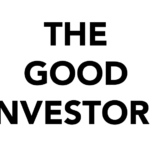Advertisement
Anonymous
How do you plan your financial targets? Specially estimating the returns and number of years for each investment to contribute to your overall financial goal (eg 100K by 30)?
I am a beginner investor, a fresh working adult, planning how much to allocate my savings into different investment channels. I have used online investment calculator but I am uncertain the growth % I should enter for my Syfe Equity 100 portfolio. Furthermore, how do you guys estimate how much you need to generate from your stock/etf investing to reach your targets? Would be great if you can provide a simple chart and example. Thanks!
5
Discussion (5)
Learn how to style your text
Reply
Save
Here is what you could do:
predict your income over the next few years. This should be relatively straightforward if you are in a traditional profession with enough data
calculate what percentage of it that you need to invest to get 100K by 30.
Use the following formula:
M = P × ({1 + in – 1} / i) × (1 + i).
In the above formula –
M is the amount you receive upon maturity (100K)
P is the amount you invest at regular intervals (this is to be calculated)
n is the number of payments you have made ( number of years to 30 X 12) — monthly payments
i is the periodic rate of interest.
If we assume 6% annual return, ‘i’ will be 0.005
Since you are just starting out 6-7% is safe return. You can always play around with this percentage to get other number.
If you can save this much amount monthly.. then go ahead and invest that amount diligently every month in some good equity ETFs.
If you cannot save this amount monthly, then there are two ways:
Increase your savings .. increase income and reduce expenses
Increase return - if I were you, I would focus on (1) since you are just starting out. Don’t invest in something you don’t understand just because it may give you higher return.
Hope this helps!
PS: it’s always good to have aggressive goals. Even if you don’t make it to 100K by 30, you will be definitely be closer to it than what would have been if you had no goal.
Also, make sure you have fun while you are at it!
Reply
Save
Zongzong
24 Mar 2021
Retail Investor at A Few Months
Hitting 100k is definitely a good first target for anyone, next would be 200k, 500k and then 1M, etc...
Read 1 other comments with a Seedly account
You will also enjoy exclusive benefits and get access to members only features.
Sign up or login with an email here
Write your thoughts
Related Articles
Related Posts
Related Products

Syfe
4.6
935 Reviews
Syfe
ETFs, Equities, Bonds, REITs, Gold
INSTRUMENTS
0.4% to 0.65%
ANNUAL MANAGEMENT FEE
None
MINIMUM INVESTMENT
N/A
EXPECTED ANNUAL RETURN
Web and Mobile App
PLATFORMS

StashAway
4.7
1296 Reviews

Endowus
4.7
656 Reviews
Related Posts
Advertisement









I plan it backwards from my ideal age of semi-retirement (which is at least a 20 years timeline), where I will definitely continue to work, just at a slower pace and perhaps explore different things.
At the same time, I calculate what's the minimum monthly cashflow I need to cover for basics (w/ projected increase in all 4 aspects when starting a family):
insurance
necessity expenditure
savings
bills
Now, I'm a "dividend payout from investment portfolio" kinda investor, so my projected yearly dividends should be min monthly cashflow * 12.
Hence let's take supposed a blended dividend yield of 3% for the entire portfolio, the portfolio size would need to be cashflow * 12 / 0.03
e.g min monthly cashflow = $2000, implies yearly dividends need to be $24k, implies portfolio size needs to be $800k.
From now till ideal age of semi-retirement, calculate what's the projected growth rate necessary (blended w/ dividends reinvested) to increase your portfolio to that size, by that age, given the cash inflow you would put in per month or per year to grow your portfolio.
If that projected growth rate necessary is something like 15%, it would be delusional to think that we can beat the market consistently every year. Somewhere around 7-8% seems more likely and achieavable. Then, you calculate how much additional cash inflow you would need to put in to achieve the portfolio size necessary, given lower return rates. Then you find ways to gain those additional cash inflows.
There are different strategies/ways to approach this, and I like to plan with buffers to all numbers instead of to a T. Also, I don't have an arbitrary "100k by 30" kinda goal but more of a "what lifestyle do I want in X years time".